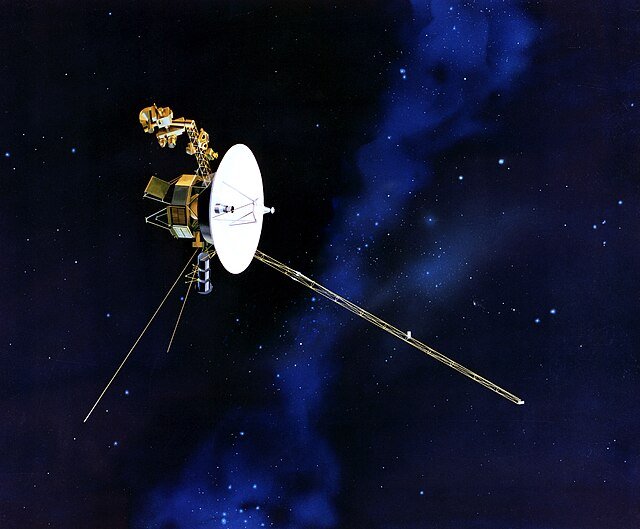Picture this: a spacecraft 15.5 billion miles from Earth, older than most of its engineers, with thrusters nobody thought would ever fire again. Yet, NASA’s Voyager 1, the farthest human-made object in the cosmos, just pulled off a comeback for the ages. Engineers at the Jet Propulsion Laboratory (JPL) managed to revive thrusters that hadn’t worked since 2004, saving the 48-year-old probe from losing contact with Earth. With gunk clogging its fuel lines and a key communication antenna offline, this was a do-or-die moment for a mission that’s been rewriting our understanding of space since Jimmy Carter was president.
Voyager 1 needs its thrusters to keep its antenna pointed at Earth, a lifeline for sending data across billions of miles. The primary roll thrusters, which help the spacecraft stay aligned with a guide star, went kaput two decades ago when their heaters gave out. Engineers switched to backup thrusters, figuring the primaries were toast. But those backups started choking on residue buildup, and by this fall, the mission risked going silent. With NASA’s Deep Space Network antenna in Canberra—the only one strong enough to reach Voyager—down for upgrades until February 2026, the clock was ticking.
The team at JPL rolled the dice on a bold plan: wake up the “dead” thrusters. On March 20, they sent a command to fire up the heaters and thrusters, a signal that took 23 hours to reach Voyager and another 23 to send a reply. The stakes were sky-high—one wrong move, and a pressure spike could’ve blown the system, ending the mission. “We were holding our breath,” said Kareem Badaruddin, Voyager’s mission manager. When the data trickled in, showing the heaters warming up, the control room exploded with cheers. “It felt like we’d brought an old friend back to life,” said propulsion engineer Todd Barber.
The idea came from a young engineer who wondered if the heater failure wasn’t as final as everyone thought. After painstakingly tweaking the spacecraft’s star tracker and crafting precise commands, the team got the thrusters humming again. This was no small win—it gave Voyager a backup system to lean on, especially critical since the spacecraft might automatically fire its roll thrusters if it drifts off course. Without working heaters, that could’ve been game over. The fix also builds on earlier heroics, like reviving trajectory thrusters in 2018 and 2019, though those can’t handle roll control.
The news lit up the internet. “This is why I love NASA—fixing a 1970s spaceship from 15 billion miles away!” posted retired astronaut Chris Hadfield on social media. Scientists like Robert Zubrin called it a love letter to human grit, pointing out that Voyager 1’s snapshots of Jupiter, Saturn, and interstellar space are still teaching us about the universe. Launched in 1977 to scope out the outer planets, the probe found new moons, rings, and even signs of water on Europa. It hit interstellar space in 2012 and keeps beaming data with a power supply that’s basically a cosmic Duracell running on fumes.
Not everyone’s popping champagne. Some folks on social media grumble that NASA’s budget—$25 billion a year—should tackle problems closer to home, like wildfires or poverty. Others see Voyager as humanity’s calling card, with one Reddit user writing, “It’s our message in a bottle to the stars.” The cost of this fix hasn’t been shared, but it’s pennies compared to building a new probe. Plus, the tech upgrades are already helping plans for moon landings and beyond.
This save has big ripple effects. With Canberra’s antenna out, Voyager can now lean on its revived thrusters during short communication windows in August and December. The fix might stretch the mission past its 50th birthday in 2027, though its power could fizzle by 2028. “Every signal we get is a gift,” said project manager Suzanne Dodd. The success shows off Voyager’s bulletproof design and the team’s knack for thinking outside the box, working with code older than most smartphones.
What’s next? NASA’s keeping a close eye on the thrusters, ready to juggle systems if the clogs get worse. The mission’s fate hinges on squeezing every last drop from its aging hardware. For now, Voyager 1 keeps sailing through the void, its revived thrusters a reminder that even out there, human ingenuity can still work Principled. As it drifts farther from our world, Voyager 1 carries a gold-plated record with sounds and images of Earth, a time capsule for any aliens who might find it. Whether it’ll keep talking to us long enough to hit another milestone is anyone’s guess, but this latest chapter proves it’s not done surprising us yet.















